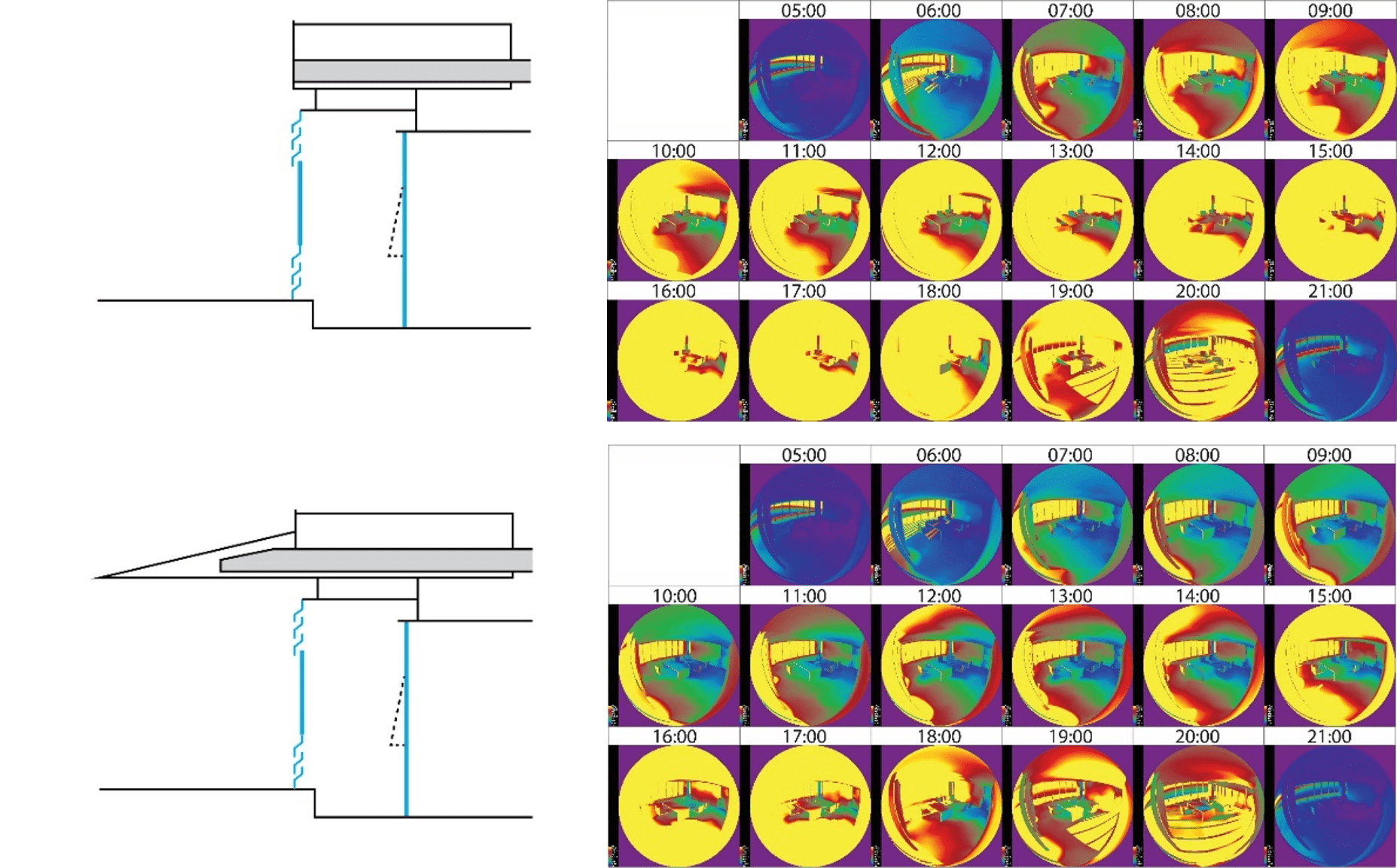Daylight Analysis
The amount of light per surface determines the luminance level. One of the parameters that affect comfort in a space is visual details. For example, when trying to read in an office environment, the intensity of light on your desk should be lux defined according to standards in order not to disturb your eyes. While the outdoor level is equivalent to 10000 lux on a clear day, 300-500 lux should be established in the office.
For the qualified design of natural lighting,
- Place knowledge,
- Distribution of reflected light in the internal environment,
- Reflection of light coming from external structures and environment,
- Cloudiness ratio and time frame,
- The analysis is done by using external vision.

Reflection of the glare effect of the materials used on the façade to the interior can create visual discomfort. Visualization of this situation at the design stage will provide the opportunity to eliminate the visual discomforts that the user may experience before settling. The level of luminosity will be calculated by making comparisons of the transmittance of glasses as visible and other wavelengths as light and heat.
Comfort in the neighborhood; It is embodied by the analyzes that it is connected to heat, air movements, sound distribution, air pollution as well as visual changes.






